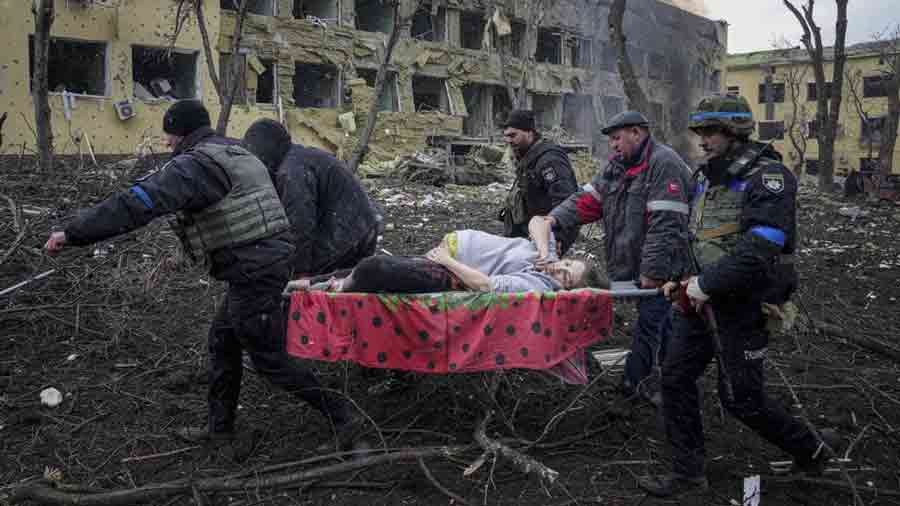The image captured the suffering and chaos of the war in Ukraine in an instant: a pale pregnant woman clutching her belly as she was carried on a stretcher, the red-and-black polka dot sheet under her a stark contrast to the smoking soil, stripped trees and blasted-out maternity hospital around her.
The scene that followed a Russian missile strike on the hospital in the besieged city of Mariupol last week was documented by journalists from the news agency The Associated Press. It was published on the front pages of newspapers, including The New York Times, a grim symbol of how Russia’s campaign in Ukraine was increasingly targeting civilians.
On Monday, The AP said it had learned that the woman in the photo and her baby had died.
With Internet connections severed, phone lines cut and cellular service disabled, The AP is one of the few news organisations still able to report from Mariupol. In an article published on Monday, The AP said that after the Russian strike on March 9, the woman was taken to another hospital. Realising that she was losing her baby, the news organisation said, she pleaded with medics: “Kill me now!”
Neither the woman nor her baby could be saved. The hospital workers did not get her name, TheAP reported, before her husband and father retrieved her body.
Responding to global condemnation of the strike, Russian officials argued that the hospital had been commandeered as a base by Ukrainian forces. Moscow’s ambassador to the UN dismissed the AP images as “fake news.”
Hundreds flee
Hundreds of people escaped Mariupol by car on Monday, according to the local government, even as a convoy of vehicles carrying food, water and medicine slowly tried to find a safe path through the battle raging around the city.
Relatives of those still living in Mariupol said fleeing seems to offer the best, and perhaps only, chance for survival.
(New York Times News Service)











